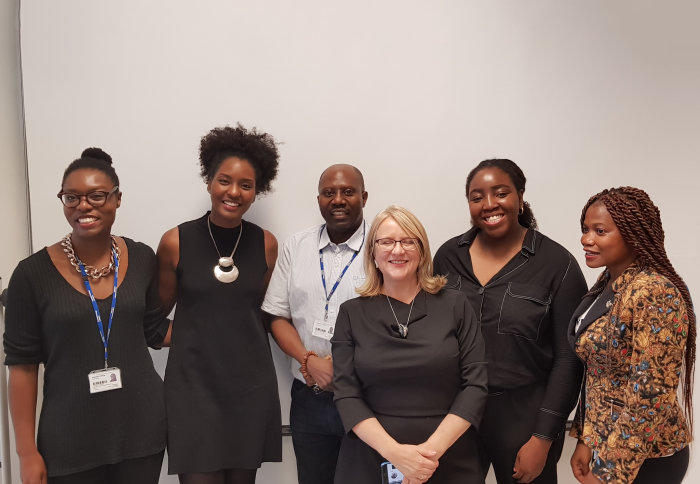Staff-led outreach initiative supports diversity in STEM
by Ellyw Evans

Creative Futures, a STEM workshop established by Imperial staff, has been inspiring pupils to study science at university for over a decade.
On 18 October, 36 secondary school pupils from across London attended a workshop at Imperial to spark their interest in studying science, technology, engineering and mathematics (STEM) subjects at university. The all-day event which is supported by staff from the Faculties of Medicine and Engineering is part of Creative Futures - a grassroots outreach initiative which is in its eleventh year.
Creative Futures was established in 2007 by Dr Sunday Popo-Ola – Research and Teaching Fellow at the Faculty of Engineering – when he was Chair of Imperial As One, the College's advisory group for black, Asian and minority ethnic (BAME) staff.
Workshops like Creative Futures are critical to enable young people to know that science is for them. Faith Uwadiae
Through interactive learning and inspirational guest speakers, Creative Futures aims to inspire pupils to achieve their full potential and encourage them to consider higher education science. Past workshops have been held as far afield as Jamaica and Nigeria as well as Imperial.
Supporting Black History Month
The recent workshop at Imperial coincided with the College’s Black History Month campaign, with the majority of pupils in attendance and staff speaking at the event from a BAME background.
Dr Popo-Ola, who is a recent winner of the President's Award for Societal Engagement and has led Creative Futures since its conception, said: “Providing role models who are STEM and also BAME is a great way to combine two campaigns. The BAME staff and students are, in effect, living proof that BAME kids can include STEM in their choices.
"Black History Month to me is less about looking at the past and more about seeing that trails have already been blazed and many paths are available so that they appreciate their potential for STEM in the future. We try to apply that strategy to all types of diversity and the two campaigns are entirely complementary.”

Role models matter
A key part of the day was introducing the pupils to Imperial staff and students from a variety of backgrounds to act as role models. There was a particular emphasis on representing staff and students who have entered medicine and engineering - two scientific fields where achieving diversity and equality has been a challenge.
The role model panel included the following:
- Yasmin Adelekan-Kamara, Year 2 MBBS student at the School of Medicine.
- Dr Rahma Elmahdi, Senior Teaching Fellow in Global Health, School of Public Health
- Ugo Amadi, Undergraduate Student, Department of Civil & Environmental Engineering
The students also heard from Pat Obilor who is a radio presenter and author to highlight the breadth of careers available following a STEM degree.
Staff supporting outreach activities
Others who were recognised for their efforts in organising and delivering the day are NHLI's Professor Sara Rankin, Professor of Leukocyte and Stem Cell Biology and Faith Uwadiae, a final year PhD student.
Reflecting on the event, Faith said: “I enjoyed seeing how excited these school children from underrepresented backgrounds were about science and hearing them tell me how much they wanted to be engineers. Workshops like Creative Futures are critical to enable young people to know that science is for them.”
Professor Sara Rankin who is actively involved in a variety of public engagement and outreach activities and has taken part in Creative Futures since 2008, said: "The highlight of the event for me is hearing the talks given by our staff and students that really inspire the pupils attending and serve to raise their aspirations. By running events like this we hope to show that doing STEM at University and coming to Imperial is within everyone's reach."
Interactive STEM learning

The finale of the day was the engineering challenge led by Dr Popo-Ola. The students discovered how engineers design and build bridges, learning first hand about the physics of construction. Students were tasked with building their own structures from wood, ensuring they incorporated the basic principles of physics into their designs.
Students were given a set amount of paper money each to buy equipment, materials and knowledge to enable them to build their bridges, therefore testing their collaborative and team building skills. Bridges were later tested for their strength and the winning team was announced.
If you would like to take part or support Creative Futures events at Imperial, please contact Sunday Popo-Ola.
The next Creative Futures workshop will take place in November in Trinidad and Tobago!
Article text (excluding photos or graphics) © Imperial College London.
Photos and graphics subject to third party copyright used with permission or © Imperial College London.
Reporter
Ellyw Evans
Faculty of Medicine Centre